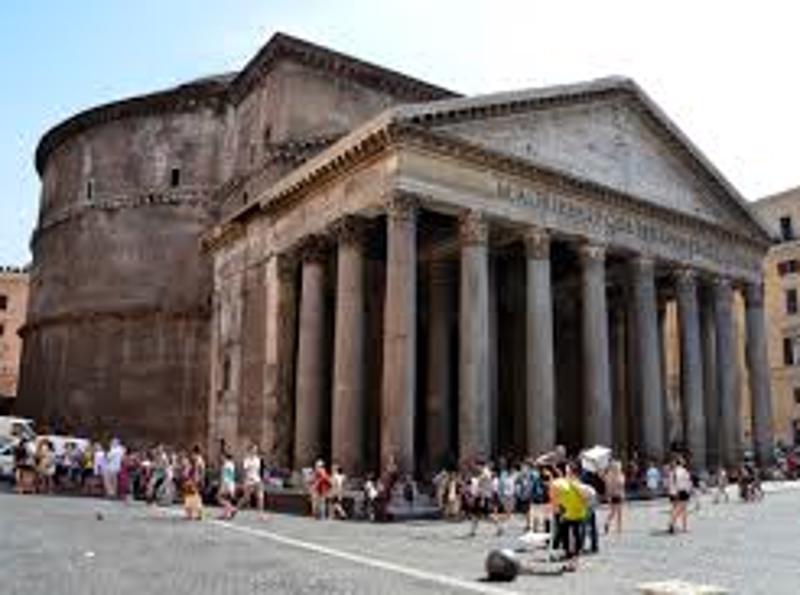Classics 304: Eternal Rome Digital Portfolio
The pantheon is one of the most well preserved ancient temples left in the city of Rome. It stands in the heart of Rome surrounded by modernized restaurants and apartments as a sole reminder of the history of this area. For centuries it has served the Roman people, and in many different ways. Today you can walk into this colossal rotunda and find the body of Raphael amongst others. Today it is a catholic church attended by average roman citizens. It’s adorned with Christian artwork and statuary all along its walls and holds mass every day. This does not represent what the pantheon is however. The pantheon was originally built to be a house for all the roman gods. Statues of the different gods lined the walls of the structure and worship was performed for all of these gods. The pantheon represents a common theme in the growth and transformation of Rome. As Christianity became legal in the Roman empire it grew exponentially and so Rome had to grow with it. In order to accommodate this budding religion, and as a sign against the times of polytheism, many of the pagan churches were either converted into Christian churches or destroyed and pillaged to make room and materials for new churches. Marble was taken from facades and statues of pagan gods were destroyed. The pantheon is a shining example of Rome’s reuse of antiquity.
kashford
22 chapters
16 Apr 2020
Chapter 15: The Pantheon
The pantheon is one of the most well preserved ancient temples left in the city of Rome. It stands in the heart of Rome surrounded by modernized restaurants and apartments as a sole reminder of the history of this area. For centuries it has served the Roman people, and in many different ways. Today you can walk into this colossal rotunda and find the body of Raphael amongst others. Today it is a catholic church attended by average roman citizens. It’s adorned with Christian artwork and statuary all along its walls and holds mass every day. This does not represent what the pantheon is however. The pantheon was originally built to be a house for all the roman gods. Statues of the different gods lined the walls of the structure and worship was performed for all of these gods. The pantheon represents a common theme in the growth and transformation of Rome. As Christianity became legal in the Roman empire it grew exponentially and so Rome had to grow with it. In order to accommodate this budding religion, and as a sign against the times of polytheism, many of the pagan churches were either converted into Christian churches or destroyed and pillaged to make room and materials for new churches. Marble was taken from facades and statues of pagan gods were destroyed. The pantheon is a shining example of Rome’s reuse of antiquity.

1.
Introduction
2.
Chapter One: The Gemini Statues
3.
Chapter 2: The Largo Argentina
4.
Chapter Three: The Temple of Jupiter
5.
Chapter 4: The Via Sacra
6.
Chapter Five: The Colosseo
7.
Chapter 6: Statue of Augustus
8.
Chapter Seven: The Arch of Titus
9.
Chapter 8: Constantine's Basilica
10.
Chapter Nine: The Tiber River
11.
Chapter 10: The Sarcophagi
12.
Chapter 11: Caesars Forum
13.
Chapter Twelve: St. Peters Basilica
14.
Chapter 13: Roman Sewers
15.
Chapter Fourteen: Egyptian Obelisk
16.
Chapter 15: The Pantheon
17.
Chapter Sixteen: Bernini Bridge
18.
Chapter 17: The Wedding Cake
19.
Chapter Eighteen: The Mussolini Window
20.
Chapter 19: Basilica of Saint Lawrence
21.
Chapter 20: The Piazza del Popolo
22.
Conclusion: The more things change